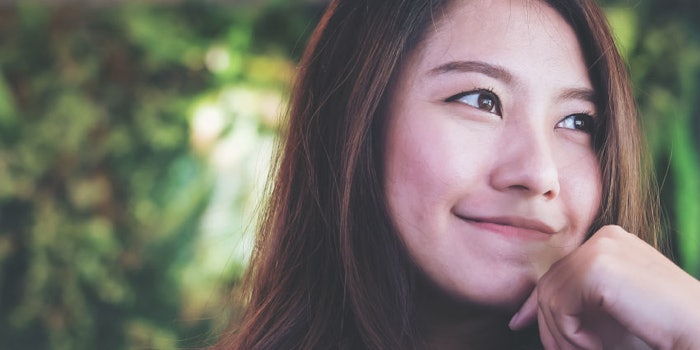
Read the full feature in our May 2022 digital edition here. . .
The Vancouver Sun recently published1 an interview with Maybelline New York’s Toronto-based lead makeup artist Grace Lee, who gave her spring beauty report. But rather than matte versus glossy lipstick, or the heavy or light application of foundation, Lee reported that the past few years have really focused on personal style. “We’re in a freaking pandemic and we’re batting COVID,” she said, emphasizing it’s all about, “[Doing] whatever makes you feel good.”
The “feel-good” factor in beauty is about more than the consumer liking or disliking a product; it’s about the emotion elicited and measuring those effects. According to Markets and Markets, the global market for emotion detection and recognition is projected to expand from US $23.6 billion in 2022 to $43.3 billion by 2027 at a CAGR of 12.9%.2 Based on the end user, the commercial segment is expected to grow the fastest with applications ranging from measuring customer satisfaction through video assessment and image processing; and detecting the moods of a customer; to working with commercial teams and AI to enhance the experience of shoppers.
A recent collaboration between L’Oréal and the neurotech firm Emotiv illustrates such an application.3 According to L’Oréal, 77% of consumers want their fragrance to bring emotional benefits such as happiness or relaxation. The partnership therefore aims to combine scents, algorithms and a headset to help consumers make personalized fragrance choices.
The electroencephalogram-based (EEG) device detects the consumer’s responses to the fragrances, which are then fed into machine learning algorithms for analysis. The result determines the ideal scent “suited to their emotions.” Regarding this initiative, Stephan Bezy, international general manager at Yves Saint Laurent Beauté, stated, “Once we know which scents make people feel happy, energized, or other emotions, we can customize fragrances even more–the potential is boundless.”
Belcorp Latin America also leveraged biometrics to design a line of mood-inspiring fragrances.4 During product development, the company even added a layer of complexity to the emotional assessment—sociocultural influence. Lavender, for example, is a scent many consumers would find relaxing but in some parts of South America, it has been used to fragrance a household cleanser. Such associations certainly influence the emotions of the user.
Emotions also connect with skin health and appearance. Negative styles of thinking, i.e., hostility, pessimism, thought suppression, rumination, etc., have been shown to shorten telomeres.5 In contrast, increasing one’s stress resilience through a sense of purpose in life, optimism, focus, mindfulness and self-compassion has been shown to slow the process of aging.
Given these connections, how might cosmetics inspire positive consumer emotions and, in turn, support positive health and beauty outcomes? What directions could product development take? We asked several industry experts to weigh in; following are their responses.
. . .Read the full version in the May 2022 digital edition here. . .
References
- Harris, A. (2022, Mar 29). Spring beauty report: It’s all about, ‘You do you.’ Available at https://vancouversun.com/life/spring-beauty-report-its-all-about-you-do-you
- MarketsandMarkets (2022, Mar 23). Emotion detection and recognition market worth $43.3 billion by 2027. Available at https://prn.to/3uFbgrhhtml
- Gleason-Allured, J. (2022, Mar 23). L’Oréal x Emotiv launch neurotech scent selection platform. Available at https://bit.ly/3xrA5bP
- García, D., Guzmán Alonso, M., Briceño, F. and Jiménez, J. (2021 Oct). Wellness by design. Positive comparison patterns to engage Latin American consumers through fragrance. Available at https://bit.ly/36aANPu
- Cerebral beauty: Emotions and aging, and ayurvedic analysis. Available at https://bit.ly/3M4OmPK










